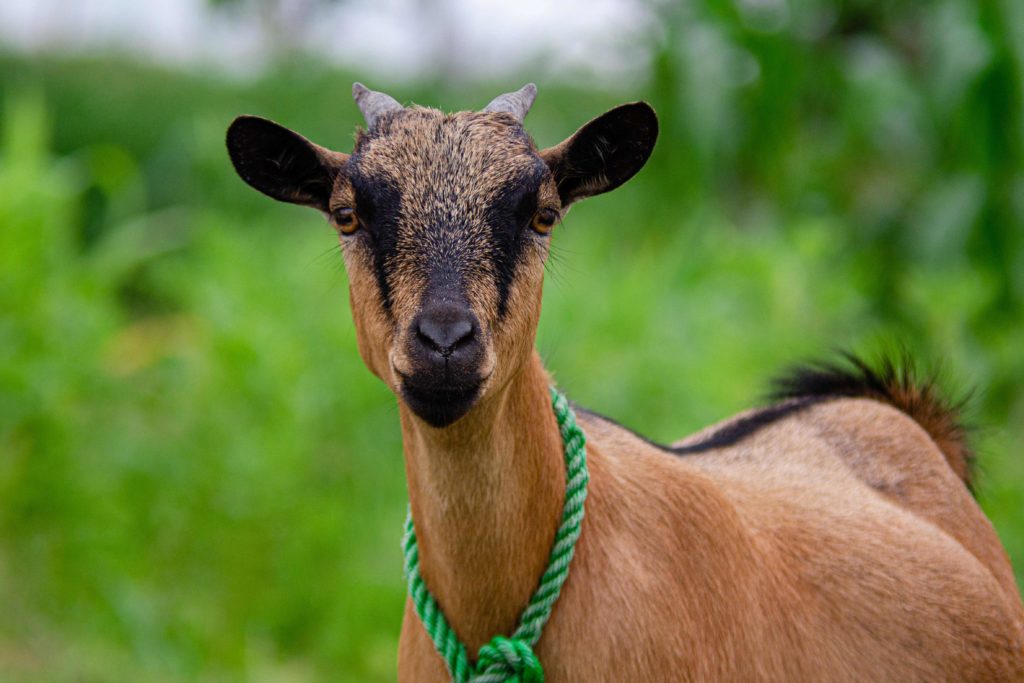Improving goat meat productivity in Nigeria
Goats in Nigeria are mainly produced by smallholder farmers in low input, low yielding systems. Production and household income can be increased through interventions to increase reproduction, growth rates and animal survival.
Photo credit: Shutterstock.
Current production systems
Most goats in Nigeria are indigenous breeds used for meat, hides and savings. Goats are mainly produced by smallholder farmers in low input, low yielding systems.
This factsheet uses production systems from Katsina Province as an example of how goat production can be improved. While we model goats only, we expect results to be applicable to sheep and mixed flocks.
Issues limiting goat meat production
Low reproduction rates
Largely caused by inadequate nutrition and disease, and genetic potential of small ruminant breeds.
Low growth rates
Largely caused by inadequate nutrition due to seasonal feed shortages and disease.
High animal mortality
Largely caused by poor animal hygiene, disease and high parasite burden.
Modelled baseline household
- 15 breeding Red Sokoto females, 1 male + offspring
- Kids weaned at 3 months
- Males sold at 1 year
- Mating from 10 months, 40% twinning
- 15% mortality of kids and adults
Modelled interventions to increase production
Reduced mortality
A 33% reduction in herd mortality through improved animal hygiene, management and treatment of internal parasites. Cost of healthcare ₦500/head/yr.
Later turnoff
Males were kept longer to increase turnoff weight and sold at 24 months.
Later turnoff + supplement males
Weaned males supplemented with 0.2 kg/head/day purchased concentrate (maize, wheat offal, cottonseed cake, bonemeal) to increase liveweight gain, sold at 25 kg.
Later turnoff + concentrate-based diet
Weaned males fed concentrate at 0.5 kg/head/day to increase liveweight gain.
Supplement breeding females + reduced mortality
Females of breeding age supplemented 0.3 kg/head/day concentrate during the dry season. A 33% reduction in mortality to 10%.
Combined interventions
Combinations of the above interventions.
Interventions can increase production and profitability
Modelled impacts of interventions to goat meat production systems
| Flock size
(head) |
Number of births/year | Number of animals sold or consumed by household | Production1
(kg liveweight) |
Losses2
(%) |
Annual income from goat production
(NGN3) |
|
| Baseline | 28 | 14 | 10 | 141 | 17 | 49,013 |
| Reduced mortality | 29 | 15 | 12 | 161 | 13 | 67,569 |
| Later turnoff | 31 | 13 | 6 | 104 | 23 | 33,348 |
| Later turnoff + supplement males | 27 | 14 | 9 | 205 | 18 | 69,205 |
| Later turnoff + concentrate-based diet | 26 | 14 | 10 | 237 | 18 | 78,332 |
| Later turnoff + high supplement males + reduced mortality | 27 | 15 | 12 | 274 | 13 | 114,321 |
| Supplement breeding females + reduced mortality | 34 | 21 | 17 | 201 | 11 | 70,417 |
| Supplement males & breeding females + reduced mortality | 30 | 21 | 18 | 374 | 12 | 145,766 |
1 Production – total liveweight of animals sold and consumed by a household per year; 2 Losses – percentage loss from mortality, theft, predation, etc. in a flock per year; 3 1 USD = 381 NGN (Nov 2020)
Key messages
Modelling of interventions shows the greatest increases in production come from combining multiple interventions.
Combined interventions are more successful than single interventions.
Later turnoff of growing males is only profitable if supplementary feeds are available to increase growth rates.
Strategic supplementation of breeding females is likely to be most profitable where productivity is limited by low reproduction rates. The high level of twins (40%) in our baseline meant that birth rates were reasonably high, despite individual conception rates being sub-optimal.
Smallholder farmers often face multiple barriers (distance to market, capital, quality of products) in accessing improved feeds and healthcare as modelled in these scenarios. Access to markets and inputs should be considered in any intervention program.
Download the Improving goat meat productivity in Nigeria factsheet here.


